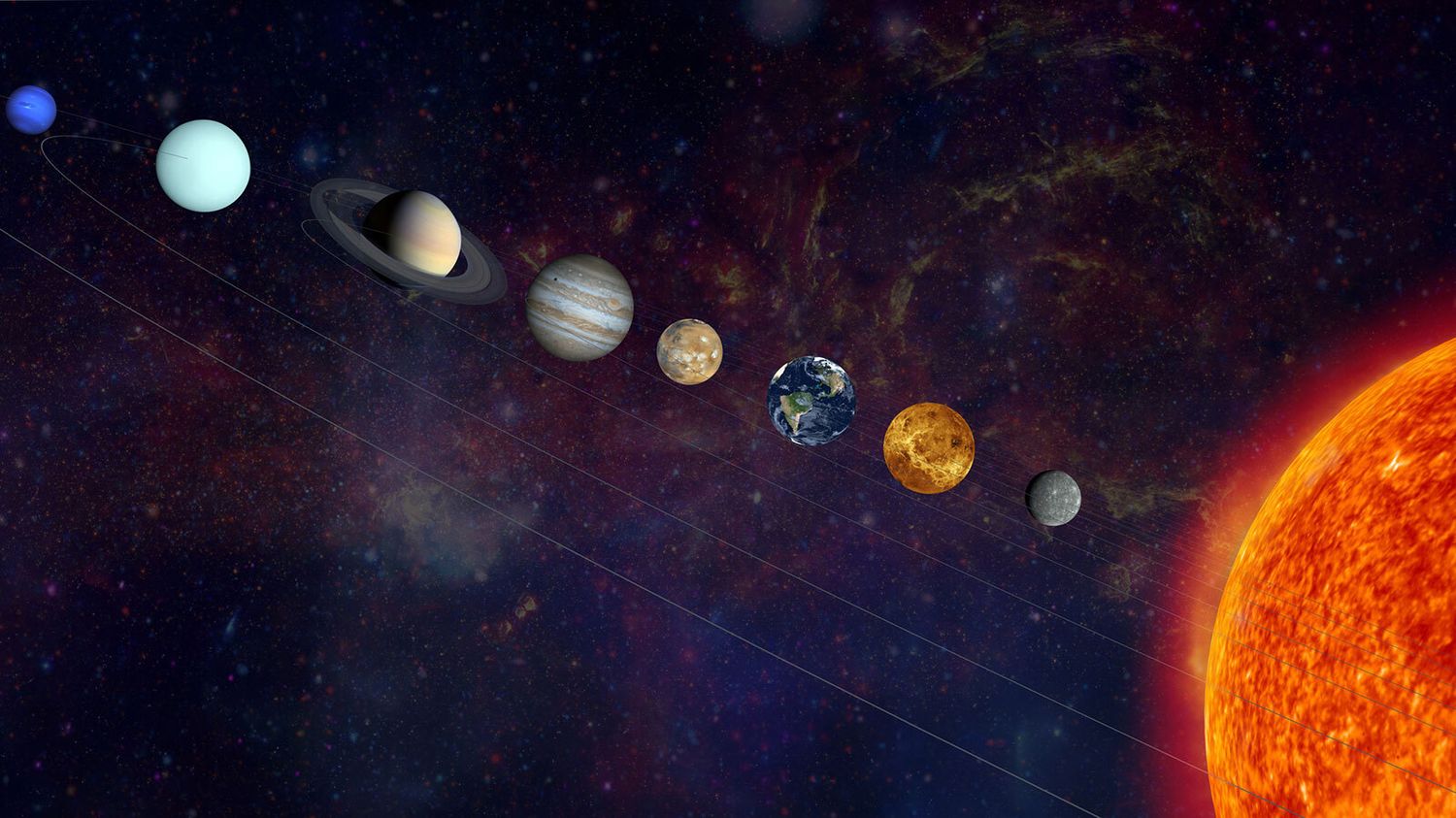
Planetary alignment is a rare and captivating event where multiple planets in our solar system appear to line up in the sky. This phenomenon has intrigued astronomers and stargazers for centuries. But what exactly happens during a planetary alignment? How often do these alignments occur, and what can we learn from them? In this article, we'll explore 20 fascinating facts about planetary alignment, shedding light on its frequency, visibility, and scientific significance. Whether you're an astronomy enthusiast or just curious about the cosmos, these insights will help you appreciate the beauty and complexity of our solar system.
What is Planetary Alignment?
Planetary alignment happens when multiple planets in our solar system appear to line up in a straight line from our perspective on Earth. This rare event has intrigued astronomers and the public for centuries. Let's explore some fascinating facts about this celestial phenomenon.
-
Frequency of Planetary Alignment
Planetary alignment is rare because each planet follows a unique elliptical orbit around the Sun. Even when planets are on the same side of the Sun, they don't always align perfectly from our viewpoint. -
Optimal Viewing Conditions
To see a planetary alignment, find a spot with minimal light pollution and a clear view of the horizon. The best time is usually 30-60 minutes before sunrise when planets are visible in the eastern sky. Telescopes or high-powered binoculars can help spot fainter planets like Neptune and Uranus. -
Visibility of Planets
Not all planets are equally visible. Mercury and Venus are tough to spot due to their proximity to the Sun. Mars, Jupiter, and Saturn are easier to see with the naked eye, while Neptune and Uranus need telescopic assistance.
Special Terms and Concepts
Understanding planetary alignment involves some unique astronomical terms and concepts. Here are a few key ones.
-
The Great Conjunction
A "great conjunction" refers to the alignment of multiple planets, often highlighting when Jupiter and Saturn appear close together in the sky, creating a striking visual effect. -
Syzygy
"Syzygy" describes the alignment of at least three celestial bodies. This term is more commonly associated with solar eclipses involving the Sun, Moon, and Earth rather than planetary alignments. -
Orbital Planes
Each planet has its own orbital plane. The ecliptic, an imaginary line marking the Sun's path, isn't perfectly flat. Planets' orbits deviate from this plane, making perfect alignment nearly impossible.
Historical and Future Alignments
Planetary alignments have occurred throughout history and will continue to happen in the future. Here are some notable ones.
-
Historical Alignments
In 949 C.E., all eight main planets were in the same part of the sky, a rare event happening every few thousand years. The alignment of all nine planets (including Pluto) in 1982 was another significant event. -
Doomsday Predictions
Alignments often spark doomsday predictions. In 2000, some believed all nine planets aligning would cause massive disasters. However, nothing catastrophic happened. -
Gravitational Effects
The gravitational effects of planetary alignments are minimal. The combined gravitational pull of five planets on the other side of the Sun is about 30 millionths of the Sun's pull, making it negligible. -
Tidal Forces
Tidal forces from planetary alignments are also minimal. The tidal force caused by five planets lined up in 2000 was less than that of a Jumbo jet flying at 30,000 feet.
Upcoming Alignments
Future planetary alignments offer exciting opportunities for stargazers. Here are some to look forward to.
-
Future Alignments
On September 8, 2040, five naked-eye planets will align, with the crescent Moon between Venus and Saturn. On March 15, 2080, six planets will be visible in the morning sky, featuring a "great conjunction" of Saturn and Jupiter. -
Rare Alignments
Alignments of six planets are infrequent. Similar alignments could be visible in the pre-dawn hours of August 28, 2024, and again on January 18, 2025. These events require optimal viewing conditions. -
Full Planetary Alignment
A full alignment of all eight planets on the same side of the Sun is virtually impossible. Such an alignment occurs roughly every 13.4 trillion years, far beyond the Sun's estimated lifetime.
Observing and Understanding Alignments
Observing planetary alignments can be a thrilling experience. Here are some tips and insights.
-
Planetary Alignment and Earth’s Orbit
Earth’s orbit isn't significantly affected by planetary alignments. The gravitational stresses caused by multiple planets aligning are minimal and don't impact Earth’s orbit or geological activity. -
Observing Planetary Alignments
Various tools and apps can help observe alignments. The Sky Tonight app lets users select a date and explore the sky view for their location, aiding in planning and preparation. -
Public Interest
Planetary alignments often capture public imagination, increasing interest in astronomy and space exploration. Events like the alignment of six planets on June 3, 2024, and August 28, 2024, offer rare opportunities for stargazers.
Scientific and Cultural Significance
Planetary alignments hold significant scientific and cultural value. Let's explore their impact.
-
Astronomical Significance
While rare and spectacular, planetary alignments hold scientific value. They provide opportunities for astronomers to study planetary orbits and positions in detail, enhancing our understanding of the solar system. -
Cultural Impact
Alignments have been part of human culture for centuries, often symbolizing significant events or periods. Myths and legends have added to their cultural significance. -
Educational Opportunities
Planetary alignments offer excellent educational opportunities for students and the public. They provide tangible examples of astronomical concepts, making complex ideas more accessible and engaging. -
Conclusion
Planetary alignment is a rare and fascinating phenomenon offering insights into our solar system. While it may not have significant gravitational effects, it holds immense scientific and cultural value. Understanding the frequency, visibility, and significance of planetary alignments helps us appreciate the beauty and complexity of the universe.
The Fascination of Planetary Alignment
Planetary alignment is a rare and captivating phenomenon that sparks curiosity and wonder. These events, where multiple planets appear in a line from Earth, offer unique opportunities for stargazers and astronomers alike. While alignments like the one on June 3, 2024, are uncommon, they provide a chance to observe the intricate dance of our solar system.
Despite myths and doomsday predictions, the gravitational effects of these alignments are minimal. They don't significantly impact Earth's orbit or cause natural disasters. Instead, they serve as a reminder of the vastness and beauty of space.
For those interested in witnessing these celestial events, finding a spot with minimal light pollution and using tools like telescopes can enhance the experience. Planetary alignments not only deepen our understanding of the cosmos but also inspire a sense of awe and appreciation for the universe we inhabit.
Was this page helpful?
Our commitment to delivering trustworthy and engaging content is at the heart of what we do. Each fact on our site is contributed by real users like you, bringing a wealth of diverse insights and information. To ensure the highest standards of accuracy and reliability, our dedicated editors meticulously review each submission. This process guarantees that the facts we share are not only fascinating but also credible. Trust in our commitment to quality and authenticity as you explore and learn with us.


